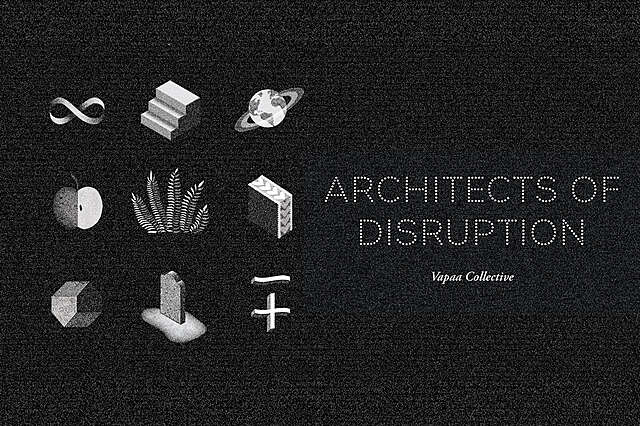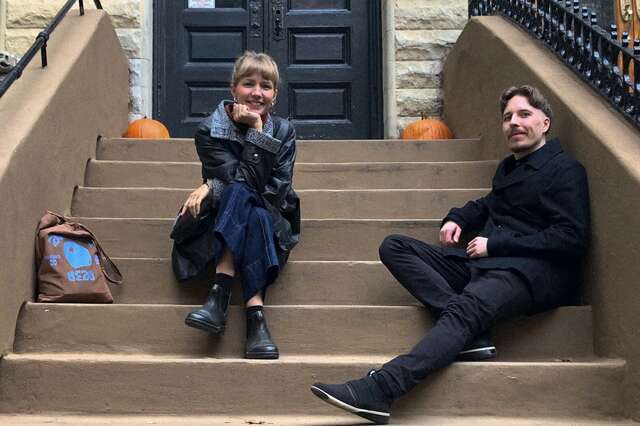Architects of Disruption challenges the definition of great architecture

The essay collection published by Vapaa Collective brings forth the architectural community’s desire for and understanding of the urgency of climate disruption. The editors of the publication, architects Iines Karkulahti, Charlotte Nyholm and Meri Wiikinkoski, have invited nine voices of climate disruption to contribute.
The climate crisis will radically change the entire building industry. The best architecture of our time will have to be redefined and the disruption among architects has already begun.
If there was one clear solution to stopping the environmental destruction caused by construction, it would hopefully be mainstream by now and the whole problem would be history. But this is not the case, as even seemingly sustainable construction is not without its problems while the climate and biodiversity crisis requires a total turn-around. Even timber construction, for example, often requires emission-intensive foundations, in addition to cutting down forests that act as carbon sinks. Nor can we stop building altogether. The road to a meaningful future is not a single voice or a straightforward one. Hence, comprehending the bigger picture and addressing it requires taking a number of different perspectives into account.
We believe that a diverse publication of the possible futures, acknowledging the complexity of the phenomenon, is as necessary in creating change as the manuals that are being produced. We hope that these essays will further the environmental debate in the field of architecture and construction, so that there will be more and more forums for the insights and perspectives that are still missing from this publication.
The road to a meaningful future is not a single voice or a straightforward one. Hence, comprehending the bigger picture and addressing it requires taking a number of different perspectives into account.
The essay collection explores the relationship between the climate and biodiversity crisis and architecture through three themes. First, the political nature and power of architecture is discussed. In his essay, PhD student of political science Aleksi Lohtaja examines the political dimension of architecture, arguing that during the climate crisis, architects must abandon their seemingly neutral role as service providers in their practice and expression and embrace their own transformative power once again. Urban planning geographer Efe Ogbeide opens up the dominant positions of architecture and urban design and the drivers of the built environment, using the example of market-driven urban development.
The second theme addresses the complexity of the problem of sustainable architecture by looking beyond emissions to the wider issue of resource consumption: emissions, but also waste, pollution, species and habitat loss. The four authors open up what the transition in architecture looks like today.
Architect and professor Kimmo Lylykangas weighs up what should be taken into account if design proposals are to be judged not only on architectural quality but also on emissions. Jere Nieminen, researcher and founder of the Wild Zone NGO, sheds light on the kind of active relationship that can be established between urban nature and urban residents when we also plan for other species. Architect and PhD researcher Ninni Westerholm will discuss the steps that would be needed to implement the circular economy on a large scale in construction. Architect Mira Kyllönen discusses what building renovation is and what it should be in this day and age.
The third important theme is the new age of being an architect and the importance of design. Antti Majava, PhD researcher from the BIOS research group, will analyse the relevance of techno-utopias in halting natural destruction and will envision the potential of architects as generalists in ecological reconstruction. Panu Savolainen, architect and historian, associate professor, will examine the hero myth of architecture and the heroic deeds of our time. Finally, architect and doctoral researcher Maiju Suomi takes readers to the frontiers of beauty, reflecting on the possibility of architecture to bring nature and humans back together.
How architects will manage to respond to the climate crisis is the most professionally interesting question of our time, the answer to which will go down in architectural history.
Architects of Disruption makes audiences realise how complex and still underestimated the problems of global warming and extinction of species are from an architectural point of view. On the other hand, it shows that there are alternatives to what we are doing today that are more interesting and inspiring than our current approach.
As different sectors of society produce different amounts of climate emissions, the scale of the disruption required by climate action also varies from sector to sector. As a major emitter, the built environment sector as a whole faces an inevitable transformation. The solution is not in the hands of just one professional group, but that is not a good enough reason to remain on the sidelines. How architects will manage to respond to the climate crisis is the most professionally interesting question of our time, the answer to which will go down in architectural history.
Amidst the immediate threats, the climate crisis, which is at the root of many other crises, is easily overlooked. The authors of this publication seize the disruption caused by the climate crisis as an opportunity to outline futures worth pursuing.
Architects of Disruption is openly available in English and in Finnish at www.vapaacollective.fi.
A Finnish language discussion on the themes of Architects of Disruption will be held as part of the 3A Talks series on 12 April. Read more (in Finnish) through this link.

